What Happens if You Add More Butter and Sugar to Cookies
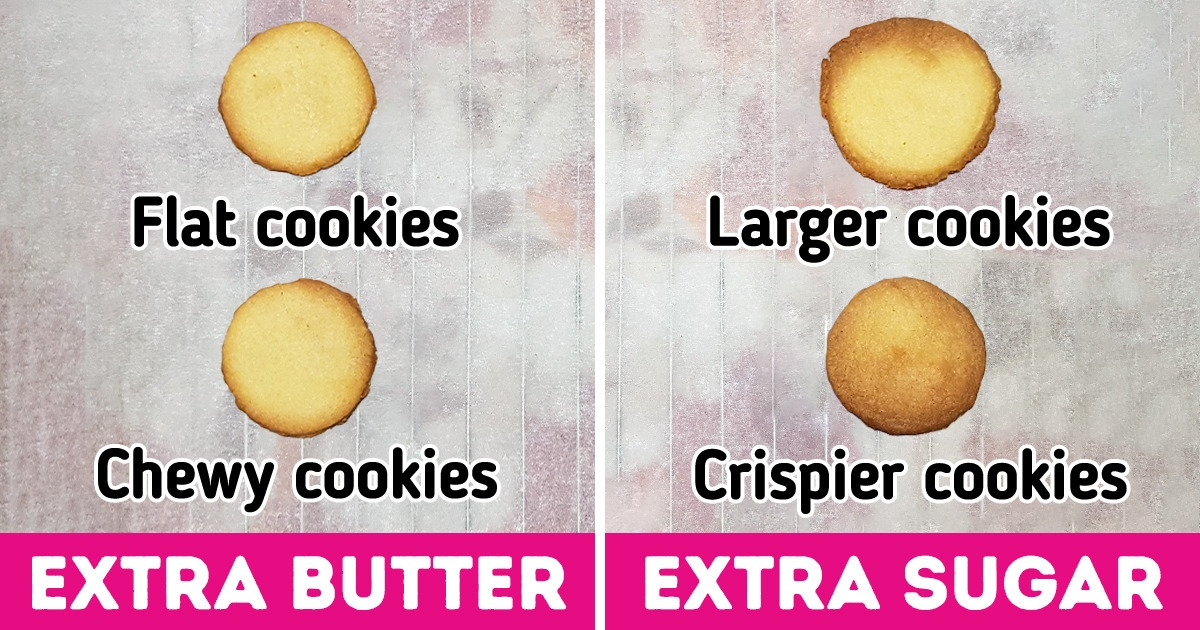
Baking the perfect cookie is not just achieved by following a recipe to a T. Several factors will come into play, such as using different amounts of some main ingredients. For instance, if you used less sugar in a recipe, you’ll end up with a paler, bland-tasting cookie.
5-Minute Crafts has decided to find out what happens when you do the opposite — like adding more butter and sugar to cookie dough. Discover the results of this interesting culinary experiment down below.
The function of butter in baking
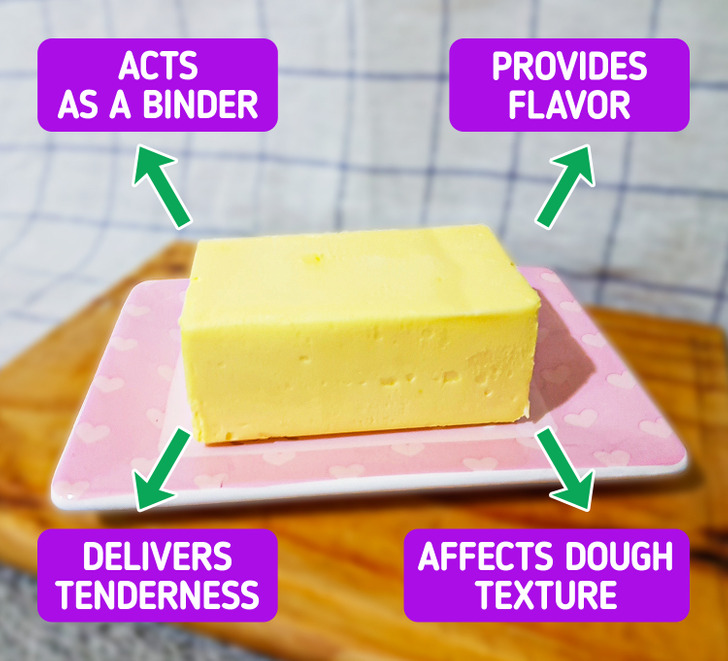
One of the key ingredients of cookies is butter, which consists of about 80% fat with 20% water. This key ingredient plays several functions in the baking process:
- It acts as a binder. The fat and water content of butter binds all the ingredients together (including flour and sugar), as moisture allows the flour to hydrate. Then moisture binds the cookie dough by allowing the starch to gelatinize. Finally, fat covers the powder particles and adheres to itself.
- It provides flavor. One of the most important roles of butter in baking is adding flavor to cookies, which is virtually impossible to imitate. In fact, if you substitute shortening or margarine for butter (or vice versa), this will change the taste of the cookies. Also, using other replacements that claim to be “butter flavored” can’t deliver the same richness that comes from real butter.
- It delivers tenderness: When mixing butter into flour, fat coats some of the flour and protects it from the liquid of the recipe. As a result, this prevents gluten from developing, so you end up with more tender and less chewy cookies.
- It affects the texture: Cookie dough spreads more during baking when you use butter instead of margarine or shortening. This happens because butter has a lower melting point than the other 2 ingredients, so it results in thinner and crispier cookies.
The function of sugar in baking
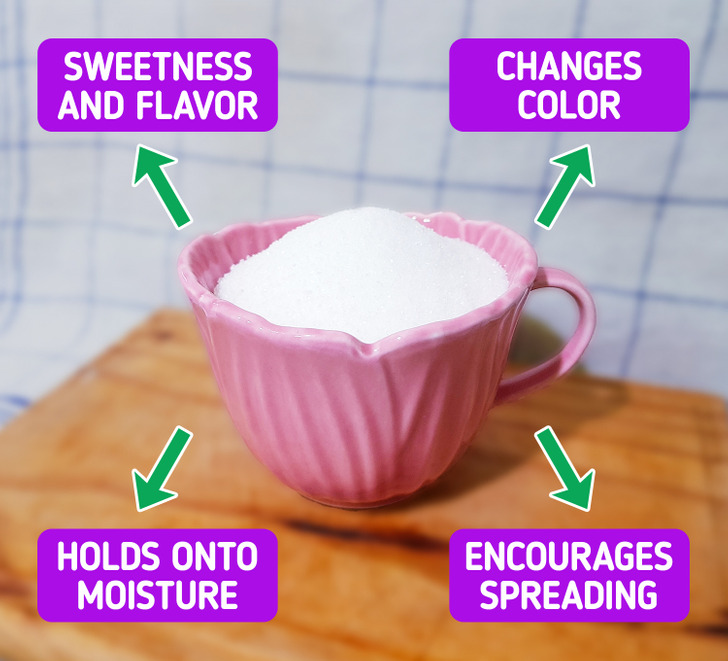
Sugar plays other roles in baking beyond making things sweet. These are some of them:
- It adds sweetness and flavor. The most important function of sugar is adding sweetness and flavor. Keep in mind that granulated sugar is a fairly neutral sweetness, while other varieties provide more flavor depth too (such as brown sugar).
- It changes the color. Sugar encourages the browning of cookies due to its caramelization process when heated. If you add higher amounts of sugar to your cookie dough, your baked goods will brown more quickly and readily than those with less sugar.
- It holds onto moisture. An interesting property of sugar is being able to grab and hold onto moisture. When this occurs, cookies don’t go stale as quickly as those baked without sugar.
- It encourages spreading. Sugar promotes spreading when it melts. The amount of sugar used in most cookie recipes is really high, so only about half of the sugar dissolves in the mixing process. Sugar then dissolves in the heated oven, causing the dough to soften and spread.
Experiment 1: too much butter in the cookie dough
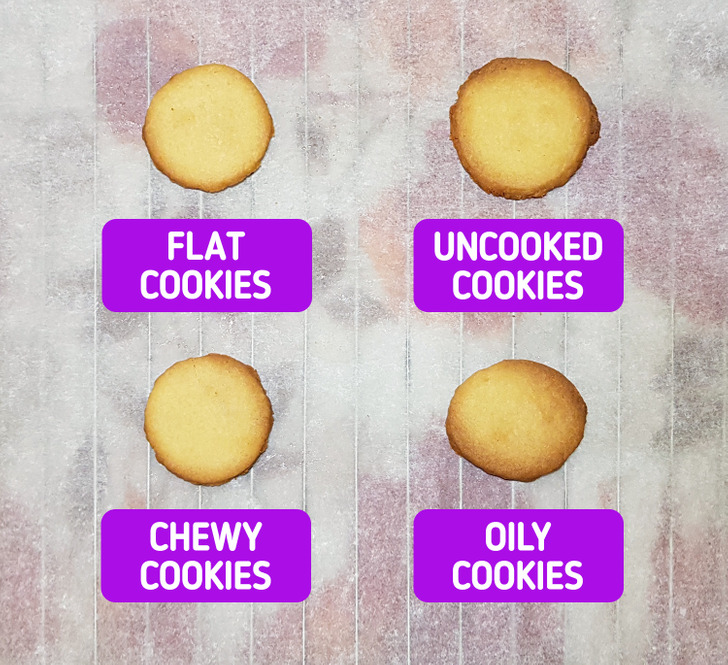
This is what actually happens after adding more butter to the dough of a shortbread cookie (more than the recommended amount in the original recipe).
- Flat cookies — although butter is a binder, this can also go wrong if you add excessive amounts since fat melts when the cookie is baked in the oven. This can result in a messy puddle if there isn’t enough flour or sugar to hold the dough together.
- Crispy but uncooked cookies — the outside of your cookie might look crispy, but the inside will still be uncooked. This happens due to the spreading of the butter, which creates the crispy layer.
- Extremely chewy cookies — the liquid content in the butter results in chewy cookies that weren’t originally intended to have that texture. Moisture helps the development of gluten in the cookie dough, and this gluten makes the cookies chewy.
- Oily cookies — an excessive amount of butter will result in greasy cookies, which are different from moist ones. Of course, this will also affect the flavor and mouthfeel of the cookies too. Finally, too much oil in your cookie dough can significantly reduce the shelf life of your cookies.
Experiment 2: too much sugar in the cookie dough
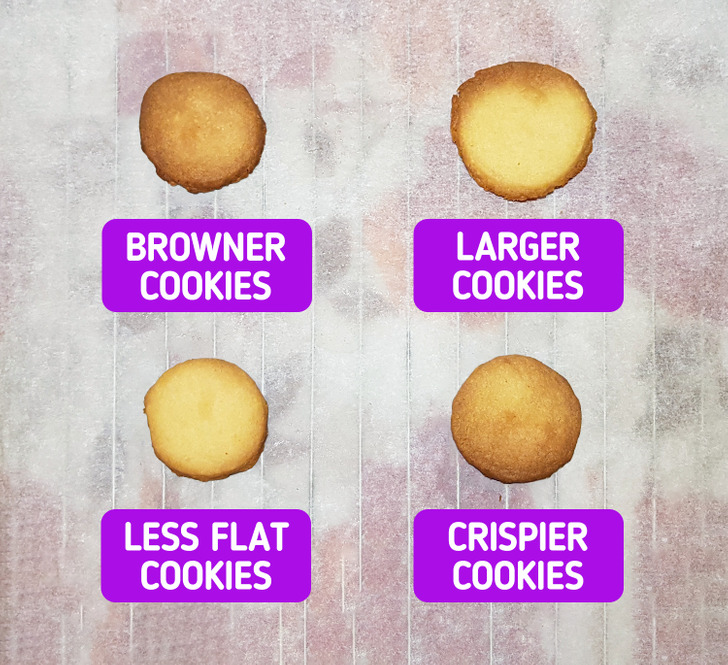
On the other hand, adding too much sugar also has a significant impact on the final outcome of a cookie recipe. Here are just some of them:
- Browner cookies —the more sugar you add, the darker your cookies will get. However, this occurs to a certain extent because a less moist recipe can prevent cookie dough from getting browner. As a rule of thumb, you should have more browning as the sugar caramelizes with heat.
- Larger cookies — cookie dough baked with higher amounts of sugar expands more while it’s in a heated oven, which results in larger-sized cookies. This happens because sugar doesn’t hold the cookie together, unlike flour, which does play this role.
- Less flat cookies — these are less likely to spread out than those with tons of butter. In fact, they have increased viscosity, so their outer edges are quite thick. All of this is because sugar dissolves more at higher temperatures, which prevents cookies from entirely flattening out.
- Crispier cookies — cookies with higher sugar content result in crispier and crunchier baked goods. This occurs because, firstly, sugar is partially dissolved in the oven, then it’s recrystallized into strong crystals when the cookies are taken out of the oven, which creates a hardened texture.